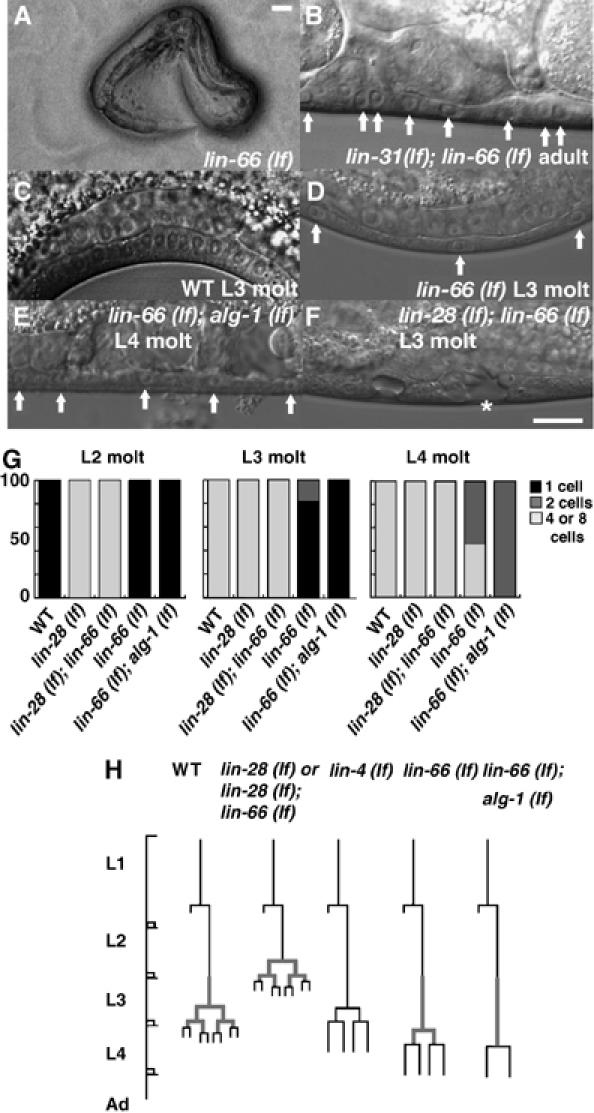Figure 1.

lin-66 (lf) causes defective vulval development. (A) A lin-66 (ku423) L4 dying larva with the gonad bursting through the vulva. Ninety-five percent of the homozygous mutants from heterozygous mother die at this stage. Bar, ∼50 μm. (B) A lin-31 (n301); lin-66 (ku423) adult animal showing that Pn.p cells failed to differentiate into vulval cells and form vulval invaginations. Arrows indicate the Pn.p derivatives. (C, D) L3 larva of WT and lin-66 (ku423) mutants showing that the first round of vulval cell divisions was delayed in the mutant animals. Arrows in (D) indicate one-cell stage Pn.p cells. (E) An L4 molting larva showing that the vulval cell division is severely delayed in the lin-66 (ku423); alg-1 (gk214) double mutants, as the Pn.p cells (arrows) are still at the two-cell stage. Bar, ∼10 μm. (F) A lin-28 (n719); lin-66 (ku423) double mutant L3 larva displaying a precocious vulval division phenotype. The vulval morphology in this worm is normally seen only in L4 larva. (G) Graphical representations of the percent of vulval cells at each division stage (derived from P5–7.p) at three larval stages. Twenty or more animals were examined for each strain at each developmental stage. (H) Schematic summary of the timing of the division of Pn.p cells destined to become vulval cells in indicated strains. Thick line indicates the egl-17∷GFP expression in P6.p.
